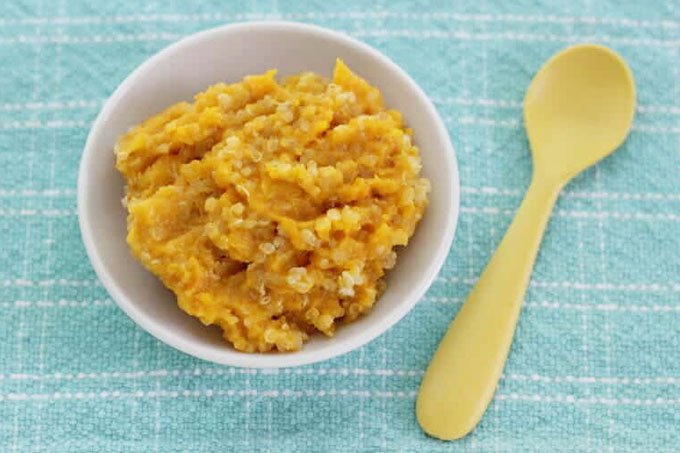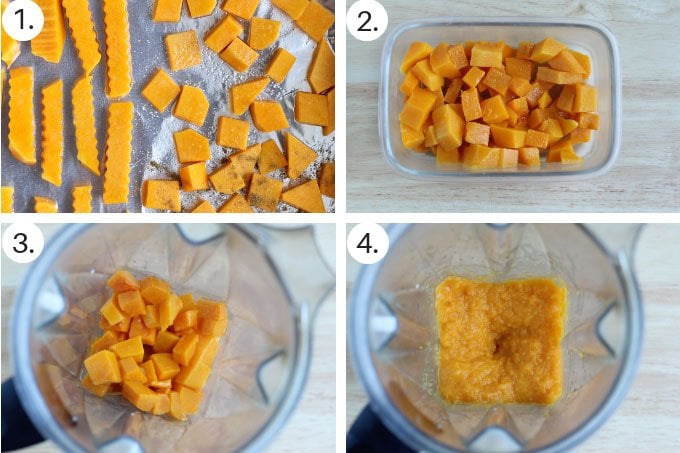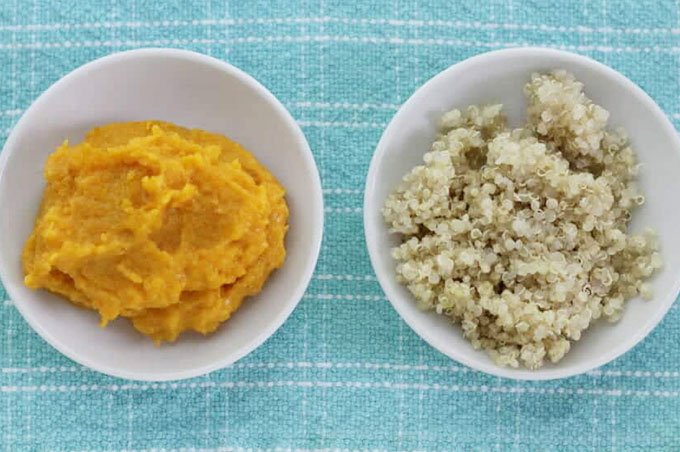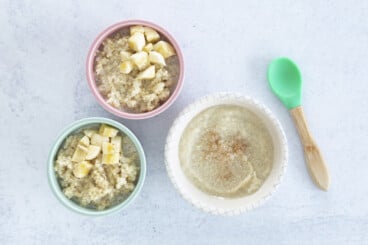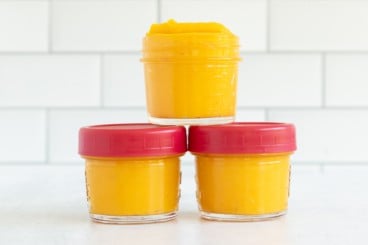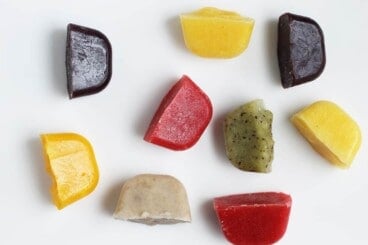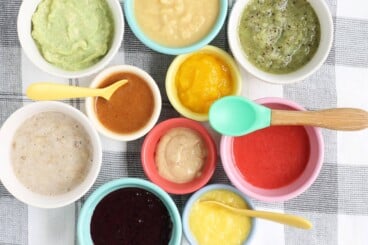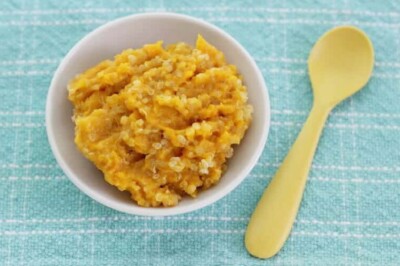Roasted Butternut Squash Quinoa Baby Food
Serving up quinoa to little ones can be seriously messy, but when you combine it with a puree, it magically holds together much better. This recipe is a simple combination of two healthy foods, which makes it a great baby food combination, and it contains complete plant-based protein, too. This is a dish with components you can make ahead of time and you can enjoy it right alongside baby. Some ideas to add flavor and interest to your serving include topping it with a fried egg and minced scallions, adding hot sauce, or adding cooked crumbled Italian sausage.
Ingredients You Need
To make this recipe, all you’ll need is butternut squash and quinoa. You can add in additional flavors, but that’s really all you need for the base recipe! Sign up for our email updates to get tips and ideas sent to your inbox. TIP: You can also use store-bought butternut squash puree (either the kind in a can from the baking aisle or the kind from a baby food pouch) to make this even easier.
How to Roast Butternut Squash Step by Step
To roast butternut squash and then turn it into a puree, this recipe for Butternut Squash Puree has the full details for you. TIP: You can do this a few days ahead and store in an airtight container in the fridge if desired.
How to Make Butternut Squash and Quinoa
Once you have your squash puree ready, prepare quinoa according to package directions and stir it all together. You can adjust the ratio of puree to quinoa to vary the thickness as desired. TIP: Be sure that your quinoa is totally cooked through and very soft for the best results.
Flavor Additions to Try
Cinnamon: Sprinkle with a little cinnamon (or pumpkin pie spice) to add a pleasant warm note. Cumin: Sprinkle on a little ground cumin for a Mexican nod. Ginger: Grate in a little fresh ginger or a sprinkle of dried to add a zing of flavor.
How to Introduce Stage 2 and 3 Baby Foods
A friend recently asked me for advice about transitioning her brand new one-year-old to more table foods, and away from purees. Purees are so easy for little ones to eat and as parents, they don’t bring near as many concerns about choking. But it’s important for older babies and toddlers to learn to eat foods with a variety of textures, including Stage 3 baby foods, since they need a chance to practice developing all of their motor skills—including the ones in their mouths. TIP: You can offer this on a preloaded spoon, directly on a highchair tray, or let the baby or toddler practice self feeding with a spoon and a small bowl.
Transition Foods for Babies
Research has found that introducing lumpier textures by the time babies hit about 9 months can lead to a wider range of accepted foods for years to come, so it’s important to introduce more textures like the ones from the quinoa in this recipe. This basic method is a go-to of mine for all sorts of baby and early toddler meals: Combine a pureed fruit or veggie with a grain and boom, a nutritious meal is served! It’s smooth but still textured, so a little one can practice moving more complicated mixture in their mouth. Nutritionally, the puree with a grain has vitamins A and C from the squash, vegetarian protein from the quinoa, fiber, and fat from the coconut milk—which is good for providing balanced energy and fueling proper brain development. I’d love to hear what your family thinks of this recipe if you try it, so please comment below to share!
Quinoa for Babies (Quinoa Baby Food)
Butternut Squash Baby Food Puree
Baby Food Storage: Tips on Freezing and Best Containers
10 Easy Homemade Baby Food Ideas
